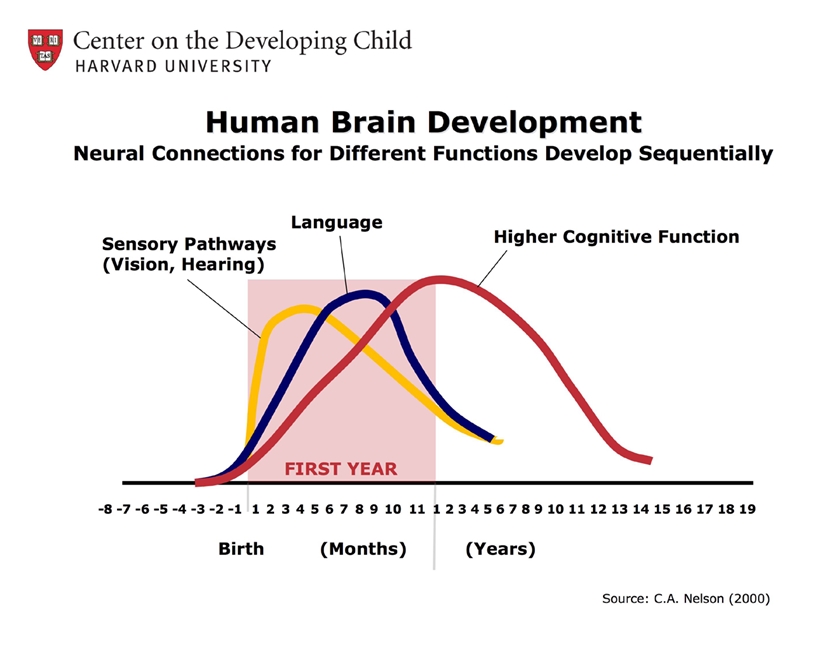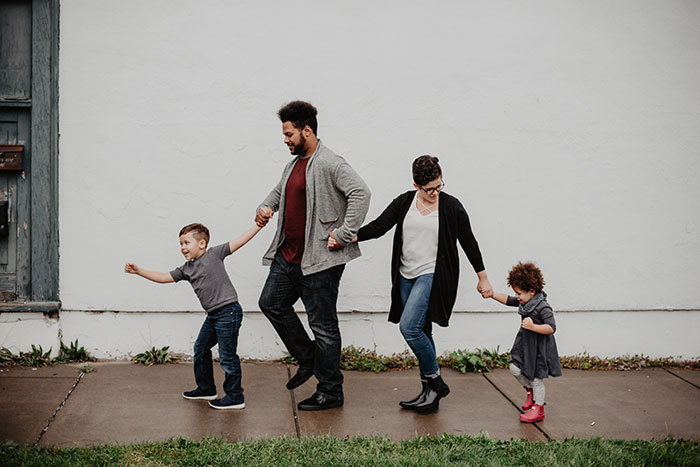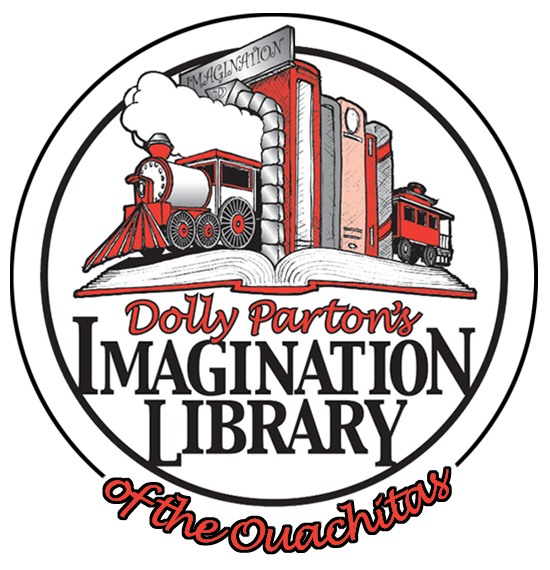Garland County Imagination Library
EARLY LITERACY MATTERSWhy Early Childhood Literacy Matters

That’s where the Arkansas Imagination Library comes in. Through our partnership with Dolly Parton’s Imagination Library, we are working to send every child in Arkansas from birth to age five a new book each month. Research has shown that a child with 25 books in their home complete an average of two additional years of schooling compared to their peers without books in their home. (2) Our goal is that every kindergartner begins school with 60 books in their home.
Research and Outcomes
85%
of a person’s intellect, personality, and social skills are developed by age 5.
95%
of public investment in education occurs after age 5, when the most critical learning years have passed. (3)
Children in middle- and high-income homes have an average of
13 books per child.
Children living in poverty have an average of
1 book per 300 children.
Because of this, low-income preschoolers have fewer learning opportunities than children from high-income backgrounds –
a major reason why they lag behind
in reading achievement throughout their school years. (4)(5)
 We can change these statistics. Education is the path out of the trap of generational poverty. The benefits of the Imagination Library program go beyond children having more books. Early language development is critical to a child’s literacy. And participants receiving books through the Imagination Library have been able to see this development in real time.
We can change these statistics. Education is the path out of the trap of generational poverty. The benefits of the Imagination Library program go beyond children having more books. Early language development is critical to a child’s literacy. And participants receiving books through the Imagination Library have been able to see this development in real time.
Success at Home in Arkansas
Young children whose parents read to them, tell stories, and sing songs become better readers and perform better in school. But more than half of Arkansas children start kindergarten unprepared, lagging their peers in critical language, math, and social-emotional skills. According to the Arkansas Community Foundation’s Aspire Arkansas Report (2019), only 38% of Arkansas third graders are proficient in reading. Third grade is considered an important milestone in a student’s career in terms of reading proficiency and is correlated to whether a student will graduate from high school. The Aspire Arkansas report indicates that, in school districts in distress, third grade reading proficiency levels are below the state average.
Arkansas Imagination Library (ARIL) is working with the University of Central Arkansas to provide research on the program’s impact to guide literacy decisions in Arkansas. Initial findings showed that although the Imagination Library is a program free to all demographics and does not have any income requirements, low-income families were less likely to enroll in the program. In response to the research data, ARIL was intentional in seeking collaborative partnerships to ensure all children in the state received books. ARIL worked to minimize the impact poverty had on Arkansas children’s reading, and was able to change data positively in less than two years, causing a 33% increase in enrollment of families living in poverty in less than two years.
Success in Ohio
Cincinnati Children’s Hospital began their partnership with Dolly Parton’s Imagination Library in 2015, and they have already served nearly 15,000 children in the first four years. They have also already seen results. In fact, Kindergarten Readiness Assessments rose by 15.4% among participating children in just three years from 42.9% in the 2016-2017 cohort to 58.3% in 2018-2019 cohort. (6)
Success in Tennesssee
The Imagination Library has been available to every child in Tennessee for 15 years now. A 2014 study of Tennessee’s statewide implementation of Dolly Parton’s Imagination Library found that children who participated scored significantly higher on Kindergarten Literacy Assessments than their non-participating peers and this trend continued into the third grade. Families who participated in the program reported reading together more as a family than families who did not receive books from the Imagination Library. (7)
Success Nationwide
In 2015, a research project funded by the U.S. Department of Education’s Innovative Approaches to Literacy (IAL) Program provided 35,000 free books to high-needs families with children ages birth to 4; connected families to libraries, literacy resources and activities. The project, supported by the Department of Education, was conducted by Parents as Teachers, one of the nation’s most respected family support organizations influencing more than 240,000 children annually in all 50 states, and Dolly Parton’s Imagination Library. Results indicated that combining literacy-enriched parents with the Imagination Library program improved the overall literacy environment in homes, including more families reading books together one or more times every day and more children pretending to read books on their own. The project revealed two major results: 1) Increased parent-child literacy activities among parents with children birth through age four, and 2) Improved oral language skills of children at 4 years of age. (8)
An additional study conducted by LeMoynes College confirmed the Imagination Library has benefits that support school readiness. Their 2015 study, supported by the Center for Urban and Applied Research, revealed that parents were more likely to read frequently to their children the longer they stayed enrolled in the Imagination Library program. When comparing those families enrolled for 4 months or less versus more than 4 months, they found that reading 3 times a week or more jumped from 59.7% to 85.2%. The percent that read to their child daily doubled from 29% to 59.3%. With more advanced statistics, they found that each month a child is enrolled increases the likelihood that they will be read to daily.
Another fascinating dimension to this study was the examination of children not born in the United States. These children are less likely to be read to on a daily basis. However, this research revealed that after a few months the native and non-native experiences were nearly identical – in other words the non-native children were being read to as often as those children born in the United States. (9)
RESOURCES
Chart: Human Brain Development, C. A. Nelson (2000). Credit: Center on the Developing Child.
1. Eliot, L. (1999). What’s going on in there?: How the brain and mind develop in the first five years of life. New York, NY: Bantam Books. 2. Evans, G. W., & Kantrowitz, E. (2002). Socioeconomic status and health: The potential role of environmental risk exposure. Annual Review of Public Health, 23, 303–331. doi: 10.1146/annurev.publhealth.23.112001.112349
3. Schweinhart, L.J., Montie, J., Xiang, Z., Barnett, W.S., Belfield, C.R., & Nores, M. (2005). Lifetime Effects: The High/Scope Perry Preschool Study Through age 40. Ypsilanti, MI: High/Scope Educational Research Foundation.
4. Neuman, S.B. & Dickinson, D.K. (Ed.) (2006). Handbook of Early Literacy Research, Volume 2. New York, NY: The Guilford Press.
5. Berk, L. E. (Ed.). (2009). Child Development (8th ed.) Boston, MA: Pearson Education, Inc.
6. Arkansas Community Foundation, Aspire Arkansas Report, accessed March 13, 2020. https://www.aspirearkansas.org/ 7. Ohio Study 8. Knox County Schools (2009). An investigation of the relationship between the Imagination Library program and kindergarten literacy. Knox County Schools (2013) The Imagination Library program and the kindergarten cohort of 2008-2009. Retrieved June 30, 2019 from https://www.governorsfoundation.org/documents/the-imagination-library-3rd-grade-follow-up-study.pdf. 9. Ridzi, F., Sylvia, M. & Singh, S. (2011). Imagination Library: Do more books in hand mean more shared book reading? Syracuse, NY: LeMoyne. Retrieved June 30, 2019 from http://www.lemoyne.edu/portals/11/pdf_content/CURAR_IL_Final.
